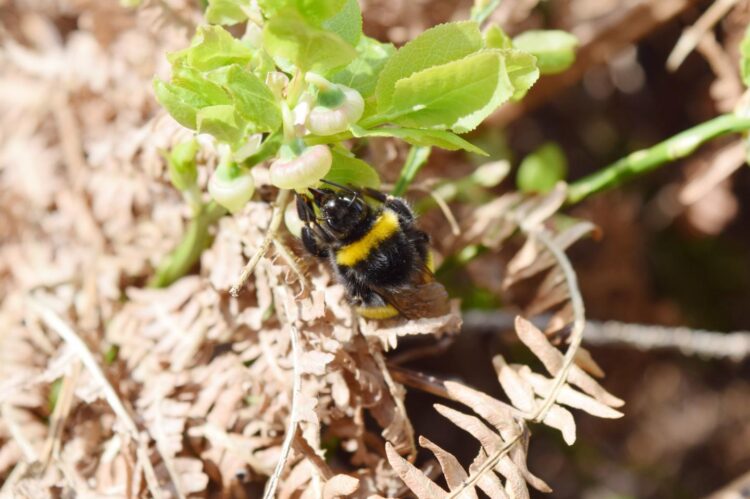How many tree species are there in the forest? How are the trees scattered throughout? How high are the individual tree crowns? Are there fallen trees or hollowed-out tree trunks? Forest scientists characterize forests according to structural factors. “Structural richness is very important for biodiversity in forests. But forests used for forestry are generally poor in terms of structure,” says Tristan Eckerter from the Chair of Nature Conservation and Landscape Ecology at the University of Freiburg. Therefore, together with research teams from the Chair of Silviculture and the Black Forest National Park, he investigated whether structures such as standing timber in forests help to promote the diversity of wild bees. In addition, the researchers analyzed which other natural features of the spruce-dominated forest help wild bees survive. They found that creating deadwood in coniferous forests is a promising restoration measure to promote the abundance of aboveground nesting bees. The scientists recently published their findings in the journal Forest Ecology and Management.
Restauration experiment aims to strengthen biodiversity
As part of this long-term restoration experiment, structural richness was artificially created in 2016 on several sample plots in the Black Forest National Park. Researchers felled and uprooted 20 spruce trees per plot, creating deadwood and small gaps in six 50 by 50 meter plots. Six other plots were left in their natural state as a control group. “The restoration measures have increased what we call the structural complexity of the forest stands. That is, these plots provide a more diverse, varied habitat. We would not have thought to have found so many different wild bees as a result,” explains Eckerter.
Standing deadwood promotes bee population
The researchers compared how many wild bees were in the different plots in June 2018 and 2019. Their results show that deadwood increases the abundance and biodiversity of wild bees. In this regard, standing deadwood particularly encourages above-ground nesting bees such as masked bees. “We suspect that some of the bees use deadwood as a nesting site,” says Eckerter. As a result, he recommends, “If the bark beetle has already flown out and the tree is already dead, it’s important to leave the standing dead tree for the bees.”
Increased blueberry growth
In addition, the thinner forest areas prove beneficial to bees, as the light stimulates the growth of flowering plants. Increased blueberry growth provides bees with more nectar, increasing the abundance and richness of the bee community. Looking toward the future, Prof. Dr. Alexandra Klein, head of the Chair of Nature Conservation and Landscape Ecology, emphasizes, „In the course of climate change, forest areas will be increasingly characterized by deadwood and sparse areas caused by storms, droughts or bark beetles. As a result, forest habitat will increase in importance for wild bees.”
###
Contact:
Tristan Eckerter
Chair of Nature Conservation and Landscape Ecology
Faculty of Environment and Natural Resources
Tel.: 0176 85056045
E-Mail: [email protected]
Dr. Marc Förschler
Head of Ecosystem Monitoring, Research and Conservation
Black Forest National Park
Tel.: 07442 18018 200
E-Mail: [email protected]
Media Contact
Tristan Eckerter
[email protected]
Original Source
https:/
Related Journal Article
http://dx.





